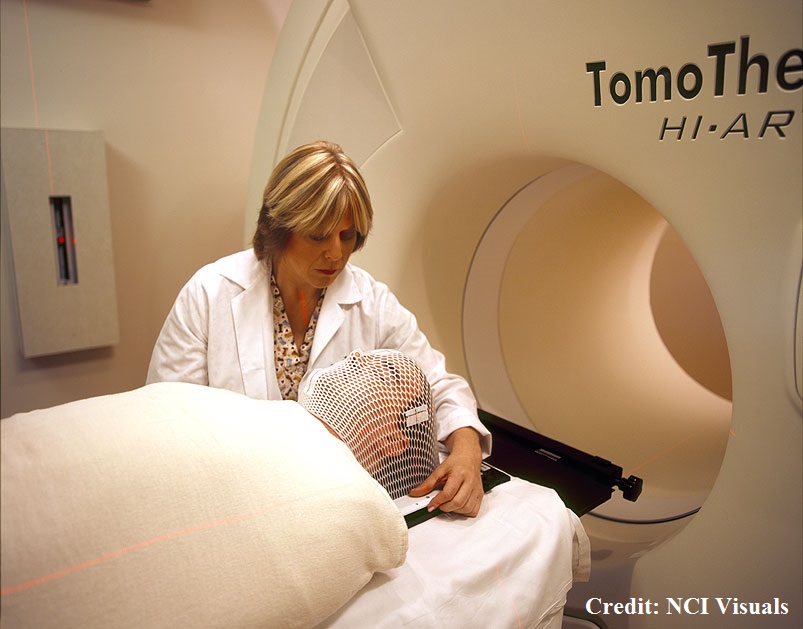
prepares a patient
for radiation treatment.
Ionizing radiation (IR) is a commonly employed cancer treatment that kills cancer cells by damaging their DNA. While the DNA damage response (DDR) pathway may be key to determining tumor responses, radiochemical damage due to IR can target the patients’ healthy dividing cells, leading to the formation of secondary hematologic and solid tumors after DNA-damaging therapy. The DDR pathway involves a large signaling network dependent on ATM (ataxia-telangiectasia mutated) and ATR (ataxia-telangiectasia and Rad3-Related) kinases to mediate repair. While quantifying DDR proteins and phosphosignaling in response to DNA damage is invaluable for studying radiation sensitivity, cancer risk and treatment responses, functional studies of phosphosignaling networks are hampered by conventional immunoassay platforms. CPTAC investigator Dr. Amanda Paulovich and her research team at the Fred Hutchinson Cancer Research Center demonstrated the feasibility of using an immuno-multiple reaction monitoring (iMRM) assay to quantify protein expression and post-translational modifications after induction of DNA damage.
As reported in the journal Radiation Research, the investigators generated 41 novel monoclonal antibodies to DDR proteins for the iMRM assay, and further characterized their use for Western blotting. The investigators characterized the 62-plex assay using “fit-for-purpose” method validation to determine assay performance, followed by proof-of-principle experiments to quantify signaling after exposure to genotoxic stress in immortalized cell lines and primary human cells. The assay enabled profiling the effects of genomic variants and pharmacologic kinase inhibition in immortalized cells exposed to IR. These results have both basic and translational research implications, demonstrating the utility of a quantitative, multiplexed assay for studying cellular signaling dynamics related to the DDR, and the potential application to studies on inter-individual variation in the radiation response. All 62 qualified assay targets, protocols, and 41 novel monoclonal antibodies from this study are made publicly available on the CPTAC Assay Portal and CPTAC Antibody Portal.

